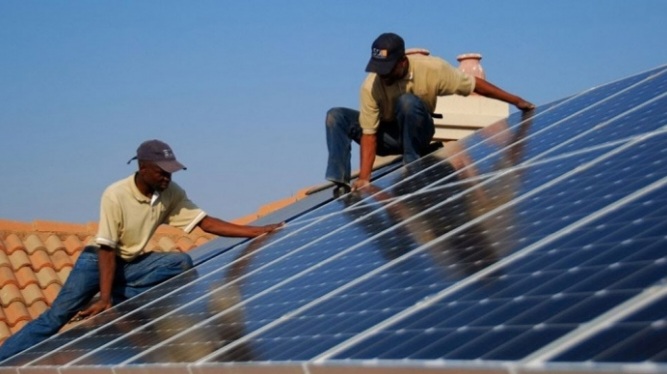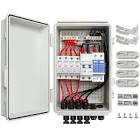10 Top Reasons Why Most Solar Systems Underperform
When “Working” Isn’t the Same as “Performing”
If you’ve ever installed a solar system that technically works but doesn’t deliver the expected power, you’re not alone.
As a solar technician, I’ve seen perfect-looking installations produce only 60–70% of their rated output.
The panels are new. The inverter is fine. The batteries are solid.
So why do so many solar systems underperform?
The truth is — most performance issues come down to small, avoidable mistakes during design and installation.
In this post, I’ll break down the most common reasons solar systems fail to deliver full power, and what you can do to fix or prevent them.
Let’s get into it.
☀️ 1. Poor Solar Sizing at the Start
This is the number one reason most systems don’t meet expectations.
Many installers guess the number of panels or batteries a client needs — without doing proper load analysis.
The result?
An undersized system that constantly drains batteries or fails to supply enough energy during peak use.
Pro tip: Always calculate the total load, daily energy consumption, and backup time before installation.
Use tools like the Globisun App for accurate solar sizing and system design. It automatically suggests the right combination of panels, batteries, and inverters for your client’s needs.

🔌 2. The Hidden Solar Wiring Mistake
Even the best equipment can fail when wiring isn’t done right.
Loose terminals, wrong polarity, poor cable gauge selection — these small oversights drain power efficiency and cause voltage drops.
Here’s what I’ve learned:
- Always use the correct cable size based on current and distance.
- Keep DC and AC cables separate to reduce interference.
- Double-check all connections with a multimeter before powering up.
Your system’s performance is only as strong as its weakest wire.

🌤️ 3. Shading and Panel Placement Errors
You’d be amazed how often installers overlook shadows.
A single shaded panel in a string can drag down the performance of the entire array.
To avoid this:
- Do a proper shading analysis before mounting panels.
- Keep panels free from shadows during peak sun hours (10 a.m. – 4 p.m.).
- Use microinverters or optimizers for partially shaded roofs.
Remember — even 5% shade can cause up to 30% output loss.
⚙️ 4. Wrong Tilt Angle or Orientation
Panels that aren’t facing the right direction or angle lose efficiency over time.
For example, in Nigeria (and most of West Africa), panels should face true south and be tilted roughly equal to your latitude (about 10–15° for Lagos).
Pro tip: If you’re unsure, use a solar angle calculator or an app like Globisun to get location-based tilt recommendations.
A few degrees off may not seem like much — but across 10+ panels, it adds up.

🔋 5. Battery Mismanagement
Undersized, unbalanced, or mismatched batteries are a silent system killer.
When the storage setup isn’t properly designed, your client ends up with short backup times and faster battery degradation.
Avoid these mistakes:
- Never mix old and new batteries.
- Ensure batteries are of the same capacity and brand.
- Allow proper ventilation to prevent overheating.
- Set charge controller parameters correctly.
A well-sized and maintained battery bank ensures your solar system delivers reliable power day and night.
⚡ 6. Inefficient Charge Controller Settings
Most installers use default charge controller settings without customizing them for the specific battery or system type.
But every battery chemistry (AGM, Gel, Lithium) has its own charging voltage and cutoff settings.
If your controller isn’t tuned properly, you’ll either undercharge or overcharge batteries — both reduce system performance.
Takeaway: Read the datasheet. Configure your charge controller based on the exact battery specs.
🧰 7. Inverter Oversizing or Undersizing
An inverter that’s too big wastes energy.
One that’s too small overloads easily and can trip often.
Pro tip:
- Choose an inverter with at least 20% headroom above your continuous load.
- Match inverter input voltage to the battery bank voltage.
- Never mix up 12V, 24V, and 48V configurations.
The right inverter keeps your power flow smooth and consistent.
🧼 8. Dirty Panels = Lost Power
Dust, bird droppings, and grime can reduce panel efficiency by 10–25%.
It’s one of the simplest but most ignored reasons for underperformance.
Solution:
Schedule regular cleaning — ideally once every 2–3 weeks in dusty regions.
Use soft brushes and clean water (no detergents).
🔍 9. Lack of Monitoring and Maintenance
A system without monitoring is like a car without a dashboard. You never know what’s happening until it breaks down.
Here’s what I recommend:
- Use monitoring-enabled inverters or IoT devices to track energy production.
- Check connections and tightening every few months.
- Keep performance logs for trends and early fault detection.
Modern tools like Globisun help you record, size, and analyze systems for performance optimization.
🌞 10. Unrealistic Client Expectations
Sometimes the problem isn’t technical — it’s educational.
Clients often expect their 1kVA system to power an entire house, or they think solar gives “unlimited” energy.
As an installer, part of your job is to set clear expectations.
Educate your clients about system capacity, usage limits, and maintenance responsibilities.
A well-informed client is a satisfied client.
Conclusion: Don’t Let Your Next Installation Underperform
Most solar systems underperform not because of bad equipment — but because of avoidable design and installation mistakes.
From wrong solar sizing to poor wiring, every small decision adds up to big performance differences.
When you plan properly, wire carefully, and use smart tools like Globisun, you can guarantee better performance, happier clients, and longer-lasting systems.
Because in solar work, efficiency is not luck — it’s precision.





